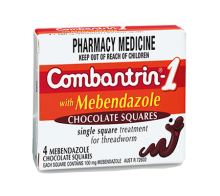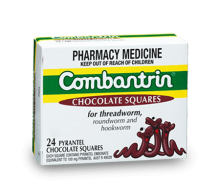The effect of worms in humans can range from simply being a nuisance to quite problematic. There are several types of worms that can infect adults and children, including threadworm, roundworm, whipworm, tapeworm and hookworm. Don't be alarmed! Fortunately the above worm types (with the exception of threadworms) are considered rare Australia and New Zealand because they are most common in regions with a high population density and poor hygiene and sanitation facilities – categories that Australia and New Zealand don't fall into.
As threadworm is the most common worm infection in Australia and New Zealand, particularly among young children, this information mainly focusses on threadworm infections.
Threadworm infections are a natural part of growing up for many children. When children have been sharing and playing with others, particularly outdoors, they like to pick up, share and catch everything – from balls to bugs and even worms. Whilst it's not an everyday occurrence, there's a chance that a threadworm infection could follow. The good news is that whilst highly contagious, a threadworm infection is not typically serious if identified and addressed quickly. It's easy to stay on top of worms if you know what to look for. The faster it's detected, the faster a treatment can be administered, and the faster your little ones can get back to doing what they do best – having an adventure discovering the world with their friends.
One of the best ways to be prepared to face off with any worm infection is by knowing as much as you can about the different symptoms. Symptoms vary depending on the type of worm infection. If you can tell a threadworm infection from a hookworm infection, you'll already be in a strong position when it comes to finding the appropriate treatment.
The most common symptoms of a threadworm can include:
- An itchy bottom
- General irritability and behavioural changes
- Trouble sleeping, or restless sleep, sometimes resulting in bed-wetting
- Sudden lack of appetite
- In girls there may be redness and itching around the vagina*
As threadworm infections do not cause major health problems, they are usually not the cause of tummy pain.
Another way to spot the signs of a threadworm infection is by taking a trip to the bathroom - worms can be spotted on the outside surface of bowel motions. These resemble fine pieces of cotton thread, up to 1.5cm long.
Other worm infections have specific symptoms. Hookworm, for example, can cause anaemia (an iron deficiency), while roundworm can cause wheezing and a dry cough. For the rarer worms, diagnosis is best made by a doctor, with reference to a pathology laboratory. Some worm infections such as threadworm and hookworm can also be simply asymptomatic.
One way to see if your child has an infection is to do the ‘sticky tape’ test. This is when you or your Doctor briefly places a piece of adhesive tape ('sticky tape') across the anus. The sticky part of the tape will pick up the threadworm eggs, which will be visible on the tape as tiny white specks.
It's important to stress that only threadworms are considered common in Australia and New Zealand. Exposure to the other worm types is fairly restricted to countries with high population density and poor sanitation facilities. Nevertheless, one of the best ways to be prepared to face off with any worm infection is by knowing as much as you can about the symptoms for different worm types.
Learn more about the different types of worms and be sure to read up on the symptoms of each worm infection, so that you can take the most appropriate action and effectively treat it should the symptoms arise.
* If vulvovaginitis is suspected, medical attention must be sought immediately.





